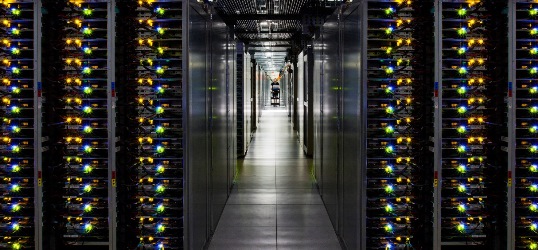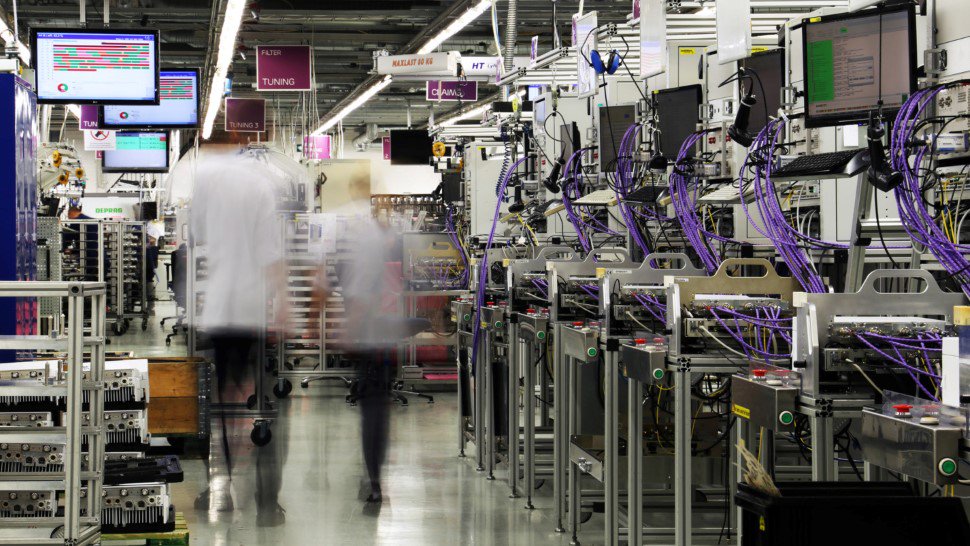Honeywell has claimed that its team of scientists, engineers and technicians have built the highest performing quantum computer available.
With a quantum volume of 64, the machine is twice as powerful as the next alternative in the industry.
The benchmark measurement of quantum volume is a combined measure of the number of physical qubits, how connected and how error prone they are. Honeywell’s system, which has 6-qubits, now beats the 53-qubit IBM system with a quantum volume of 32.
Last October, Google laid claim to being the first company to achieve “quantum supremacy” with its Sycamore quantum processor, but appears to have been overtaken.
“What makes our quantum computers so powerful is having the highest quality qubits, with the lowest error rates - this is a combination of using identical, fully connected qubits and precision control,” said Tony Uttley, president of Honeywell Quantum Solutions.
The computer is surrounded by a vacuum chamber - a stainless steel sphere, about the size of a basketball, with portals to allow in laser light. The chamber is cryogenically cooled with liquid helium to bring the temperature of the ion trap chip to 10 degrees above absolute zero - approximately negative 441 degrees Fahrenheit, colder than the surface temperature of Pluto.
Within the chamber, electric fields levitate individual atoms 0.1 mm above an ion trap, a silicon chip covered in gold about the size of a coin. Scientists shine lasers at these positively charged atoms to perform quantum operations.
Control systems precisely manipulate the hundreds of independent electrical signals required to move the ions (qubits) used for quantum information algorithms. Since the operations are all done with lasers, a multitude of optics are aligned across the optical tables, each specified for the correct colour of light. All of this infrastructure takes up roughly two large optical tables - approximately five feet wide and 20 feet long.
Honeywell Ventures has invested and partnered with Zapata Computing and Cambridge Quantum Computing to work on the computer.
The company also partnered with Microsoft’s Azure Quantum to offer organisations access to the quantum computer, both directly through its interface and the Azure Quantum cloud portal.
Other partners, like JP Morgan Chase, are already running algorithms on it for fraud detection, optimisation for trading strategies and security.
“The promise of quantum computing, ultimately, is that instead of getting close, you get exact,” Uttley said. “You’re able to look at all of those different interactions at exactly the same time to get to an optimal solution.”
Latest News
-
US pauses UK tech prosperity deal over wider trade disputes
-
Ofcom investigates BT and Three after summer outages disrupted 999 calls
-
Monzo announces plans to buy digital mortgage broker Habito
-
Technology secretary launches Women in Tech Taskforce
-
Asahi weighs dedicated cybersecurity unit after ransomware disruption
-
Crypto exchange HashKey ‘raises $206m’ in Hong Kong IPO
The future-ready CFO: Driving strategic growth and innovation
This National Technology News webinar sponsored by Sage will explore how CFOs can leverage their unique blend of financial acumen, technological savvy, and strategic mindset to foster cross-functional collaboration and shape overall company direction. Attendees will gain insights into breaking down operational silos, aligning goals across departments like IT, operations, HR, and marketing, and utilising technology to enable real-time data sharing and visibility.
The corporate roadmap to payment excellence: Keeping pace with emerging trends to maximise growth opportunities
In today's rapidly evolving finance and accounting landscape, one of the biggest challenges organisations face is attracting and retaining top talent. As automation and AI revolutionise the profession, finance teams require new skillsets centred on analysis, collaboration, and strategic thinking to drive sustainable competitive advantage.
© 2019 Perspective Publishing Privacy & Cookies











Recent Stories